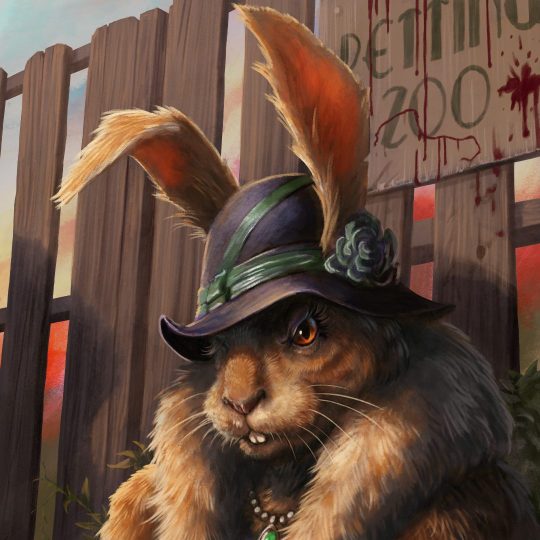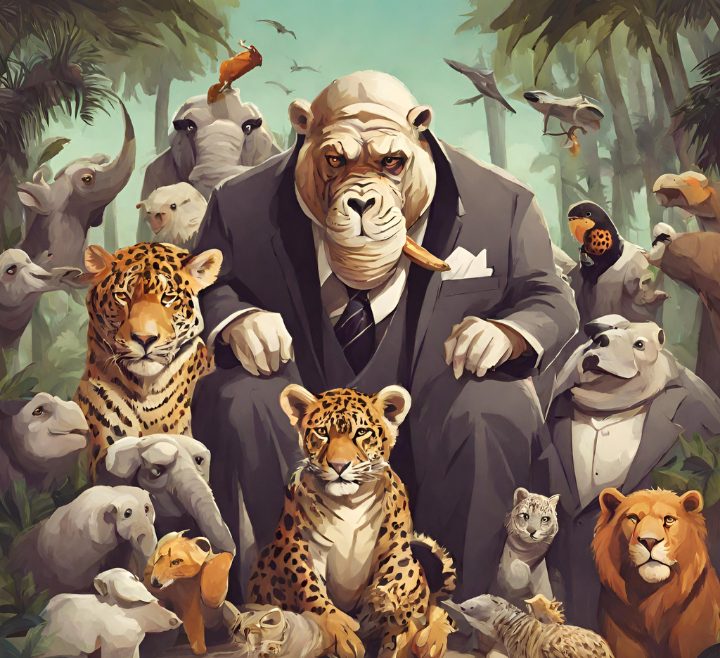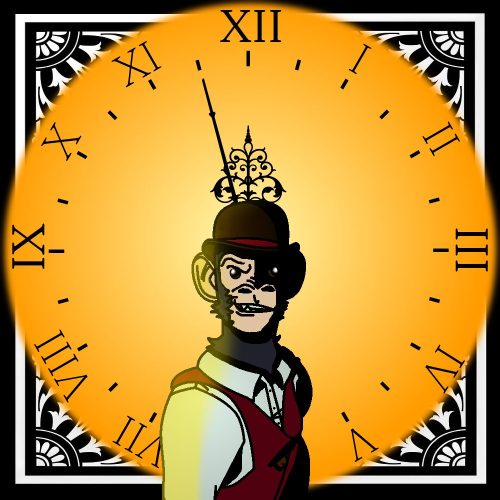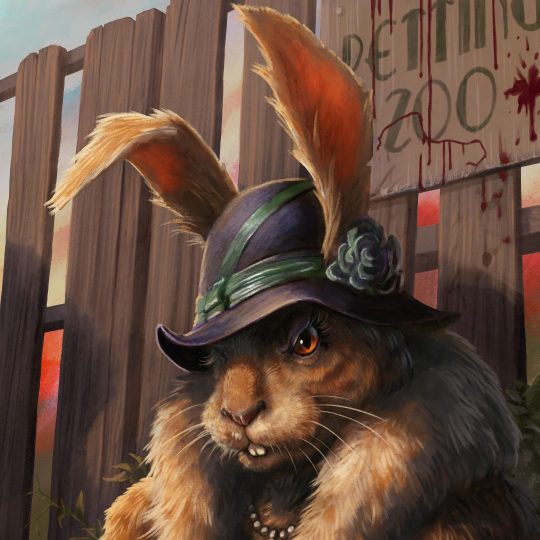
Fall in Love with Quest by The Adventure Guild for Your Next RPG Campaign
The quest to discover new and exciting approaches to tabletop roleplaying games never ends and to this point a few months ago I came across Quest from The Adventure Guild. Presented as the roleplaying adventure game for everyone Quest enjoyed a successful Kickstarter in 2018 and is now available for digital and (while supplies last) physical purchase. Quest sold me on the simplicity — the RPG system uses only a single d20 — and if I’m honest the art that evokes fun adventure. The team behind Quest, including creator and designer T.C Sottek who is also managing editor at The Verge, freelance comic artist and illustrator Celia Lowenthal and editor Chris Plante who is also a writer, reporter, critic and the executive editor and co-founder of Polygon put together a wonderful RPG. Reading the book was a joy and understanding Quest’s game system couldn’t be easier.
Welcome to Quest
I’ve been reading RPG rulebooks as leisure for a little over 30 years and I’ve got to say Quest combines easy to understand rules with fresh writing in a way I haven’t encountered before. It certainly doesn’t hurt that the layout and presentation breathes and flows so effortlessly. Staring down a thick rulebook is nothing new but it can still be intimidating to confront densely packed pages of both narrative fluff and technical game system language. Quest sharply cuts down on both those things, instead using succinct writing and design that leaves plenty of space — on the page and in your imagination — to draw you in and get you excited to put the smart ruleset to use embarking on your own awesome adventures. This isn’t surprising considering the team behind the game includes names from some of the biggest publications in the world.
Breezing through the lean 200 page Game Book felt like an enjoyable afternoon read. Coupled with the super accessible rules I felt confident enough to run a session of Quest by the time I closed the cover on the last page. Incidentally the very last page of the book is a quick reference guide with pretty much all you’d need to run or play Quest. Anything else is explained clearly and simply in the description of whatever abilities or treasure characters possess.
Quest greets you right away with a bold declaration.
“You are an adventurer in a world of magic and danger”
Actually let me back up a moment. The very first thing Quest does is welcome you as a friend to a special retreat from worries and obligations, encouraging you to close your eyes, breathe deeply and open your mind. A strong storybook opening goes a long way to establishing the vibe of the Quest. As something of an RPG rulebook connoisseur it came as a great relief not to see lengthy prose inside the cover too. I enjoy RPGs for the stories my friends and I create and I appreciate how Quest sets the stage for this instead of telling me someone else’s tale.
The table of contents bears noting too. Continuing with the second person point of view (yay!) What’s Inside literally explains what you’ll find in each section. The Game Book teaches you how to play, they you create a character and prepare them with special abilities and equipment. If you’re the Guide the last section teaches you how to run the game.
Then a double page spread of incredible art pulls you into a fantastic world you want to explore and discover. And then you’re the adventurer in the world of magic and danger.
Quest Story Engine
I mentioned at the start how Quest’s simplicity appeals to me. The very basics of the game share the same structure as other RPGs — the Guilde describes a scenes, players say what their characters do and the Guide interprets what happens next. You might investigate something further, describe how your character feels or what they’re thinking, talk to your fellow party members, attack an adversary or use a special ability. I love how Quest incorporates both mechanical things and roleplaying suggestions into the fabric of the Game Book like this.
Providing players rules like this carries over into any other RPG experience. A significant part of Quest’s rules involves teaching players to think of their characters as real people living in the campaign world. This is something I learned over the course of many years playing RPGs and Quest puts it out there clearly right off the bat. These early guidelines for play also help establish a dynamic of trust between everyone in the group. Quest encourages players to put story first not just through what the pages say but what they don’t say too.
The next sections lay out the crunch of Quest as it were. During action scenes the Guide decides whose turn it is based on what’s happening in the story and after all the characters get a turn the Guide gets a round of turns for whatever else is going on. The rules for action scenes might be my favorite rules in all of RPG-dom. It’s one page of generously sized type and contains a line of rules I feel perfectly encapsulates what I dig about Quest.
“During a turn, your character can move around and do one thing.”
There’s no action types or action points to spend, no special movements or pages of minutiae on how to trip, grab, shove, jump, climb, deceive or yadda yadda yadda. Your movement is largely descriptive since Quest measures distances in general terms like Nearby or Too Far and your one thing can be something like telling a joke, helping a friend or of course using a special ability.
Then you roll a d20, and that’s it.
Results range from Triumph to Catastrophe. Quest characters don’t have lists of skills or tons of modifiers and seriously y’all it’s so refreshing to see a game go all in on building up the feeling of trust between everyone involved. I know this sounds corny but the way Quest clearly frames the game’s purpose as making a memorable story together and having a good time creates a paradigm of collaboration founded in mutual trust. Simple and succinct writing doesn’t get bogged down by voluminous prose describing deadly perils and grisly ends. The distinction might be subtle but by leaving so much to your imagination the game avoids giving you any preconceived notions about what your stories of adventure entail.
There are hit points in Quest, with harm, recovery, injury and death part and parcel. All Quest characters have 10 hit points and this total doesn’t increase while monsters and other nonplayer characters like monsters have different amounts depending if they’re Commoners, Minions or Bosses.
Characters use Adventure Points to fuel their special abilities, beginning with 10 AP and earning more through play. Quest awards 5 AP after each game session purely as a reward for spending time with your friends. How cool is that? A Guide can award additional AP for roleplaying, overcoming challenges or encouraging fun.
Characters also learn a new ability after every session of Quest. Making character advancement a function of simply playing the game is a brilliant idea. This furthers that notion of trust I keep mentioning because players don’t need to wonder when they’ll advance because the Guide is removed from the equation.
Even gear and equipment is kept simple starting with the fact there’s no money in Quest. Characters are assumed to be able to meet their basic needs like food, shelter and mundane items like candles or tools. Characters can only carry 12 things at any given time, assuming the items could reasonably fit in a backpack or on your person. Obtaining new items involves trading and Quest makes this an opportunity for game play because characters must offer something in exchange to an NPC in order to get something valuable.
The last and perhaps best part of how to play Quest provides general guidelines for basically not being a jerk. There’s more space devoted to explaining things like being respectful, speaking clearly and asking for consent than for how to handle turns during action scenes and this is terrific.

Quest’s art evokes wondrous adventures waiting for you to discover. Click the link to visit the Quest website. [Art by Grim Wilkins]
Quest characters
Best. Character. Creation. Ever.
Making a character in Quest starts with a Character Profile. You will not see blank spaces for race, ability scores, skills and the like. Instead you’ll fill in the blanks of a questionnaire to determine things like what people first notice when they see you, where you’re from and what the people there are like, what you believe in and your dream among a few other things.
One of the choices you’ll make is your character’s role, which gives you your special abilities. There are eight roles in Quest and while they’re fantasy themed overall it’s worth noting up until this point the game does not explicitly give any genre. The art and names of things leans heavily towards fantasy but really you could create your Quest stories in any sort of setting or genre.
All the blanks on the questionnaire come with lists of examples to choose from if you need some help. For example when people see you they might first notice your iridescent skin, romantic eyes and long shadow. Or your speckled complexion, triangular head and tightly wound energy. These choices have no mechanical impact on the game or your character, giving players ultimate freedom to express their imagination. The answers on your Character Profile might even indicate you’re wearing shining plate armor or obsidian bracers. It’s all about creating the character you want to inhabit.
Creating a homeland along with beliefs, weaknesses and big dreams rounds out character creation, with six special abilities from your role giving you all the tools you’ll need to embark on adventures in the Omniverse. The Worldly Plane, Shadow Plane, Rift and Beyond create the structure of the game’s worlds, which includes the conceit that all Quest games take place in a shared universe.
Quest Guide and adventures
Much like the front half of the Game Book, the Guide’s section on how to run the game reinforces the dynamic of trust and collaboration with the other players. So much of Quest’s rules could really be a book of tips for any Game Master out there. It is awesome to see Quest express a Guide’s job the same way I’ve thought of it for years too.
“Helping the players tell an exciting story about their characters is your primary responsibility.”
Achieving this goal includes things like active listening and thoughtful responses to players, helping immersion and imagination and supporting your friends by recognizing boundaries and agreeing on stop signs.
Then you get the Build a World! Players don’t get all the fun of discovery through questionnaires. Guides fill out a World Profile with the same sense of wonder. Characters are ready to go at this point and they need a place to explore. Quest nails it on the World Profile with an introduction to set the tone.
“Your story begins…” prompts Guides to choose a starting area for the game. Like the Character Profile each blank includes many possibilities to choose from (you can make up your own too). The sample starting areas are anything but generic too. Places like the island of Draenor, the caves of Ksamkarja or the lonely moon of Visma evoke something more than just an interesting location. These places aren’t described later in the book or given information about what they’re like in any way — that’s up to you. World Profiles even include an adventure hook to get you started and encourage you to choose a movie, book, play or other fictional work to help everyone imagine the world.
The rest of the section on how to run Quest feels more like a collection of tips on how to guide storytelling, which makes perfect sense. Sections on how to set scenes, draw players in and add suspense touch on rules and rulings but the focus is more about how to be attentive and celebrate the back and forth nature of an RPG so an amazing story emerges.
There are of course sections on challenges and monsters, and it’s not surprising these are relatively easy to manage too. Quest characters are simple and straightforward, with monsters and other NPCs even moreso. NPCs have two attributes — hit points and attack rating and they’re either commoners, minions or bosses. A minion could be a bandit wielding an axe or a cultist firing bolts of dark energy and they’ll both have the same statistics. NPCs might also include a special feature though, which you can select from a small collection to give a creature something extra special like Reflection or Horrifying.
Quest treasure
The final section of the book presents a huge collection of treasures to reward characters. Treasures might be consumable and give a character a temporary bonus, provide a passive bonus, include an ability characters can activate with AP or any combination of these. Brell’s Tent in a Tin deploys a reusable magic tent large enough to fit 30 people from a pocket sized can. Cloak of a Hundred Billion Stars lets an Invoker use the Invoke ability any time for no AP cost. The variety of treasures is great. There’s quirky magical devices, powerful weapons and armor and everything in between.
Good luck with Quest
The Quest Game Book finishes up with a thank you from the creators. The short but sincere message encourages players to treasure the time spent with friends old and new as you begin your journey. I’m a sentimental fellow so this totally works on me. When my turn comes back around to run an RPG campaign for the Nerdarchy crew over on the Nerdarchy Live channel Quest by The Adventure Guild is high on my list as a strong contender. I fell in love with the simplicity and by getting tons of rules out of the way to focus on fostering a shared storytelling experience built on trust I’ve got to admit Quest quickly earned a special place in my heart. Head over to The Adventure Guild’s website and find out more about Quest here.









Pingback: Embracing the Core Principle of Quest RPG Makes a Guide’s Life Fun, Rewarding and Easy – Nerdarchy
August 12, 2021 at 9:42 am